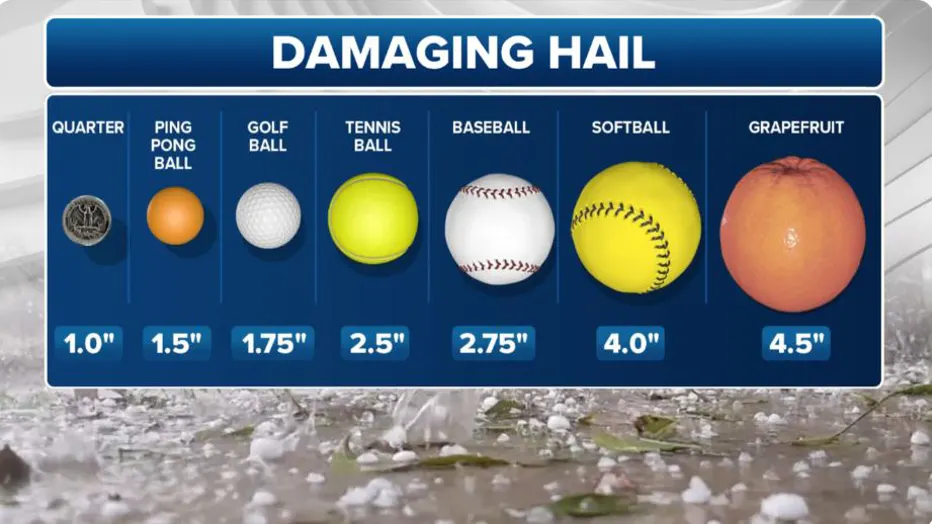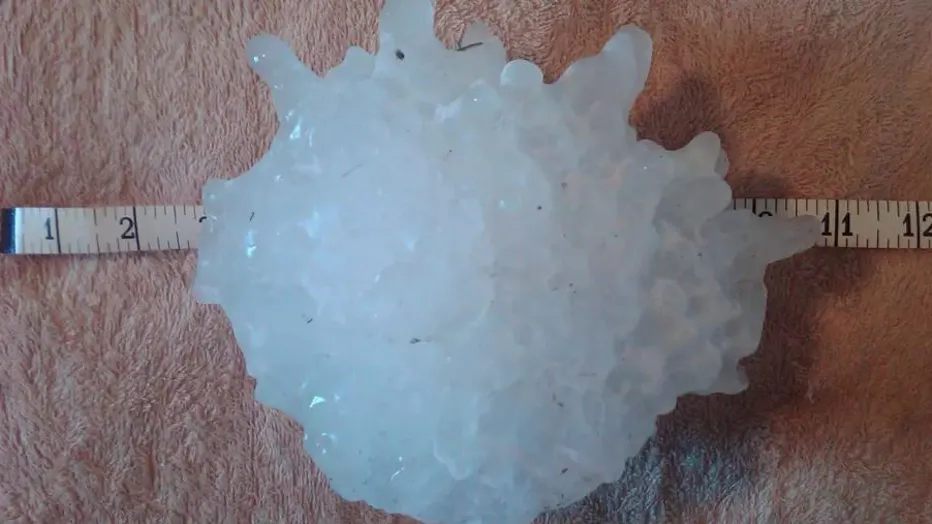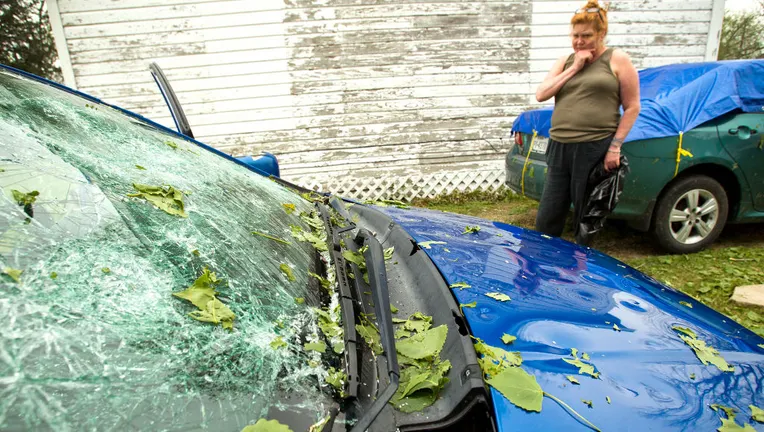Each year, hailstorms cause billions of dollars in property damage, with vehicle owners filing over 250,000 claims annually. The extent of hail damage to vehicles depends largely on the size and force of the falling ice.
Even small hailstones, no larger than pebbles, can leave minor dents or dings on a vehicle’s surface. When hailstones reach the size of quarters, they can cause visible dents and even cracks. Larger hail—comparable in size to golf balls or limes—can shatter windshields and inflict serious structural damage.
Hail forms when updrafts in thunderstorms carry water droplets into freezing air, turning them into solid ice. Once heavy enough, these stones fall rapidly, posing a serious threat to unprotected vehicles in their path.
Read More: Protecting Your Vehicle When Hail Strikes
Snow, Sleet, Freezing Rain, and Hail: What’s the Difference?
While snow, sleet, freezing rain, and hail are all forms of frozen precipitation, each has distinct characteristics—and different implications for driving and vehicle safety. Hail, in particular, poses a serious risk to vehicles during severe storms, often resulting in costly repairs.
According to experts at Kelley Blue Book, a leading authority in automotive research and valuation, protecting your vehicle from hail damage requires preparation.

The most effective strategy is to park your vehicle in a covered area—such as a garage, carport, or under a sturdy structure—well before a storm begins.If covered parking isn’t accessible, they recommend improvising with household materials.
Blankets, tarps, floor mats, or even cardboard boxes can serve as temporary protection for your car’s most vulnerable areas, especially the windshield and hood.
Long-Term Solutions for Hail Protection and Insurance Considerations
For vehicle owners in hail-prone regions, particularly across the Plains, investing in long-term protection is a wise move. Inflatable car covers have emerged as a popular solution, offering a buffer against impact during severe hailstorms.
These covers range in price from as little as $25 to over $500, depending on the quality and level of protection offered.
While such preventative measures can significantly reduce the risk of damage, unprotected vehicles remain vulnerable—especially in storms with hailstones exceeding three inches in diameter. In extreme cases, the damage can be so severe that insurance adjusters may declare the vehicle a total loss.

Repairing hail damage can be costly, with expenses for dent removal and shattered glass adding up quickly. Insurance professionals advise that standard auto policies may not include hail protection unless comprehensive coverage is in place.
For those living in high-risk areas, reviewing your insurance policy for hail coverage and understanding your deductible is essential to avoid unexpected financial setbacks.
Did the National Weather Service Capture a Photo of Bigfoot During a Pennsylvania Storm Survey?
In a curious twist, the National Weather Service (NWS) recently surveyed a storm in Pennsylvania, sparking speculation and intrigue—was a photograph of Bigfoot among the data gathered?
While the NWS continues to focus on meteorological analysis, the question of Bigfoot remains one of the most enduring mysteries.
However, shifting focus back to the realm of extreme weather, the Great Plains region, including states like Nebraska, Colorado, and Wyoming, experiences the highest frequency of hailstorms in the United States.

The largest hailstone ever recorded in the country fell in Vivian, South Dakota, on July 23, 2010. Measuring an astonishing 8 inches in diameter and weighing nearly 2 pounds, this record-breaking hailstone serves as a stark reminder of the immense power and unpredictability of severe weather events.
Frequently Asked Questions (FAQs)
What is the largest hailstone ever recorded?
The largest hailstone in U.S. history fell in Vivian, South Dakota, on July 23, 2010. It measured 8 inches in diameter and weighed nearly 2 pounds.
How can I protect my car from hail damage?
The best way to protect your vehicle is to park it in a covered structure, such as a garage or carport. If that’s not possible, use tarps, blankets, or inflatable car covers to shield the car.
Does my standard auto insurance cover hail damage?
Standard auto insurance policies generally do not cover hail damage. You would need a comprehensive insurance policy for protection against hailstorms.
What should I do if I cannot find covered parking during a hailstorm?
If covered parking is unavailable, consider using a tarp, blankets, or even floor mats to provide temporary protection. In extreme cases, large hailstones may require more robust solutions like inflatable car covers.
Can hailstones cause my car to be totaled?
Yes, hailstones larger than 3 inches can cause extensive damage, including shattered windows and severe body dents, sometimes resulting in a total loss depending on the extent of the damage.
Conclusion
Hailstorms are unpredictable and can cause significant damage to vehicles, particularly in hail-prone areas like the Great Plains. Understanding the potential severity of hail and taking proactive measures—such as seeking covered parking or investing in protective covers—can go a long way in minimizing damage.

